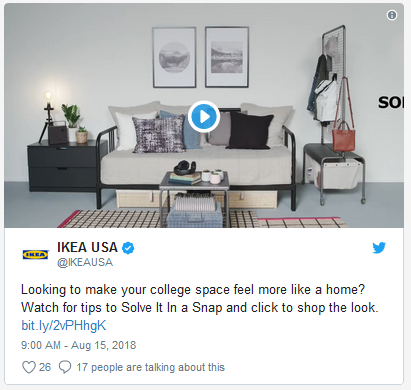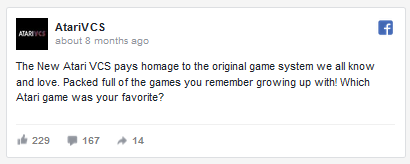How to Define Your Target Market: A Guide to Audience Research
Defining your target market is one of a marketer’s most important tasks. It’s the foundation of all elements of your marketing strategy, from how you develop and name your products or services right through to the marketing channels you use to promote them.
Here’s a hint before we dig in: Your target audience is not “everyone.” Your task in defining your target group is to identify and understand your particular niche so you can dominate it.
The better you understand your target market, the more closely you’ll be able to focus your ads, so you can pay only to reach the audience most likely to convert into customers. As your depth of audience insight grows, you’ll start to see higher conversion rates and better ROI—key metrics that matter to all marketers (and marketing bosses).
In this guide, we’ll walk you through a simple process that allows you to understand who’s already interacting with your business and your competitors, then use that information to develop a clear target group as you build your brand. It’s all about narrowing your focus while expanding your reach.
Target market definition
A target market is the specific group of people you want to reach with your marketing message. They are the people who are most likely to buy your products or services, and they are united by some common characteristics, like demographics and behaviors.
The more clearly you define your target group, the better you can understand how and where to reach your best prospects. You can start with broad categories like millennials or single dads, but you need to get much more detailed to achieve the best possible conversion rates.
Don’t be afraid to get highly specific. This is all about targeting your marketing efforts effectively, not stopping people from buying your product. People who are not included in your target market can still buy from you—they’re just not your top focus when it comes to crafting your marketing strategy.
You can’t target everyone, but you can sell to everyone.
Your target market should be based on audience research, not a gut feeling. You need to be willing to learn as you go, adapt on the fly, and go after the people who really want to buy from you, even if they’re not the customers you originally set out to reach.
How to conduct audience research: 7 tips
1. Compile data on your current customers
A great first step in figuring out who most wants to buy from you is to identify who is already using your products or services.
Once you understand the defining characteristics of your existing customer base, you can go after more people who fit the same mold.
Depending on how someone connects with your business, you might have only a little information about them, or a lot. Don’t add a lot of questions to your order or opt-in process just for audience research purposes. This can annoy customers and result in abandoned shopping carts.
But gather whatever information you do have about your existing customers into a database you can use to track trends and averages. Some data points you might want to consider are:
-
Age: You don’t need to get too specific here. It won’t likely make a difference whether your average customer is 24 or 27. But knowing which decade of life your customers are in, or their generation, can be very useful.
-
Location (and time zone): Where in the world do your existing customers live? In addition to understanding which geographic areas to target, this helps you figure out what hours are most important for your customer service and sales reps to be online, and when you should schedule your social ads and posts to ensure best visibility.
-
Language: Don’t assume your customers speak the same language you do. And don’t assume they speak the dominant language of their (or your) current physical location.
-
Spending power and patterns: How much money do your current customers have to spend? How do they approach purchases in your price category? Do they have specific financial concerns or preferences you need to address?
-
Interests: What do your customers like to do, besides using your products or services? What TV shows do they watch? What other businesses do they interact with?
-
Stage of life: Are your customers likely to be college students? New parents? Parents of teens? Retirees?
If you’re selling B2B products, your categories will look a little different. You might want to collect information about the size of businesses that buy from you, and information about the titles of the people who tend to make the buying decisions. Are you marketing to the CEO? The CTO? The social marketing manager? Understanding who within the company you need to speak to is a critical first step in crafting your brand voice.
2. Look to website and social media analytics
So, where do you get all of this audience research information? Social media analytics can be a great way of filling in the gaps in your customer analysis. They can also help you understand who’s interacting with your social accounts, even if those people are not yet customers.
We’ve got full guides on how to use analytics on all of the major social networks:
We’ve also got a guide on how to use Facebook Audience Insights, which can provide some really in-depth information about your existing Facebook audience, including what other Facebook Pages they like and what kinds of devices they use.
3. Check out the competition
Now that you know who’s already interacting with your business and buying your products or services, it’s time to see who’s engaging with the competition.
Taking a look at what your competitors are up to can help you answer some key questions: Are your competitors going after the same market segments as you are? Are they reaching segments you hadn’t thought to consider? How are they positioning themselves?
We’ve compiled a step-by-step guide on how to do competitor research on social media that walks you through the best ways to use social tools to gather competitor insights.
You won’t be able to get detailed audience research about the people interacting with your competitors, but you’ll be able to get a general sense of the approach they’re taking and whether it’s allowing them to create engagement online. This analysis will help you understand which markets they’re targeting and whether their efforts appear to be effective.
4. Be clear about the value of your product or service
This comes down to the key distinction all marketers must understand between features and benefits. You can list the features of your product all day long, but no one will be convinced to buy from you unless you can explain the benefits.
Features are what your product is or does. The benefits are the results. How does your product make someone’s life easier, or better, or just more interesting?
For example, in this IKEA ad, features of the advertised furniture might be that it is small, inexpensive, and multi-purpose. But the benefit is that it can help you make a small, temporary living space feel like home.

Notice how defining the benefits also helps you define your target audience—in this case, college students moving into a new rental home.
If you don’t already have a clear list of the benefits of your product, it’s time to start brainstorming now. As you create your benefit statements, you’ll also automatically be stating some basic information about your target demographic.
For example, if your service helps customers connect with qualified pet-sitters, you can be pretty confident that your audience will mainly be made up of pet owners (and likely ones who travel). If your product allows people to back up their mobile photos remotely, you know you’re targeting people who own mobile devices and use them to take a lot of photos.
If you’re not sure exactly how customers benefit from using your products, why not ask them? You might find that people are getting creative and using your products or services for purposes you haven’t even thought of. That might, in turn, change how you perceive your target audience for future sales. An email customer survey can turn up all kinds of great insights, as can asking a quick question on your social channels.
5. Create a target market statement
Now it’s time to boil everything you’ve discovered so far into one simple statement that defines your target audience. This is actually the first step in creating a brand positioning statement, but that’s a project for another day.
For now, let’s stick to creating a statement that clearly defines your target market.
For example, here’s Zipcar’s brand positioning statement, as cited in the classic marketing text Kellogg on Marketing. We’re interested in the first part of the statement, which defines the target market:
“To urban-dwelling, educated, techno-savvy consumers who worry about the environment that future generations will inherit, Zipcar is the car-sharing service that lets you save money and reduce your carbon footprint, making you feel you’ve made a smart, responsible choice that demonstrates your commitment to protecting the environment.”
Zipcar is not targeting all residents of a particular city. They’re not even targeting all the people in a given city who don’t own a car. They’re specifically targeting people who:
- live in an urban area
- have a certain degree of education
- are comfortable will technology
- are concerned about the environment
These are all interests and behaviors that Zipcar can specifically target using social ads. They also help to guide the company’s overall approach to its service, as evidenced by the rest of the positioning statement.
When crafting your target market statement, try to incorporate the most important demographic and behavior characteristics you’ve identified. For example:
Our target market is [gender] aged [age range], who live in [place or type of place], and like to [activity].
Don’t feel like you need to stick to these particular identifiers. Maybe gender is irrelevant for your target customer, but you have three or four key behaviors to incorporate in your statement. The key is boil all of your research down into one simple statement that can guide your marketing efforts.
If you offer multiple products or services, you might need to create a target market statement for each product, or each product category.
6. Test social ads on your target market
Now it’s time to have some fun and see how you can put your target audience research to work.
The first step is to create social ads specifically targeted to the exact market you have just defined. You might already have appropriate ad creative from a previous campaign, or from your organic social posts, but be honest about whether the material is really as precisely targeted as it should be.
Does the language speak exactly to the market you have defined in an appropriate voice? Do the visuals make sense in the context of your target market?
Going back to the Zipcar example, take a look at how the company speaks to the target market it has identified. Remember, Zipcar’s target market is “urban-dwelling, educated, techno-savvy consumers who worry about the environment.”
On Facebook:

On Twitter:

Can you see how Zipcar is speaking to its identified target market across its social channels?
Once you’re happy with your creative, it’s time to start using social tools to reach out to your defined target audience. First, you’ll need to decide which social channels you should use. Take a look at our demographics information for each social network to get a sense of which ones might best allow you to reach the target demographic you’ve identified.
Once you’ve chosen your platforms, you can get really granular in your ad targeting. Use the characteristics you’ve defined in your target market statement to build an audience for your ad. The process will vary a little for each social network, but all offer extensive targeting options. If you’re not sure where to start, check out our guide to how the ad targeting process works on Facebook.
Track the performance of your ads to see what kind of measurable results you achieve. Once you’ve established a baseline, you can use A/B testing to learn even more about what targeting options work best, and whether you need to tweak your creative approach to speak more directly to your target audience.
7. Revisit your audience research as needed
The results of your test may provide additional insight you didn’t have when you first created your target market statement. Be sure to incorporate any lessons you learn, and revisit your target market statement regularly to make sure it still accurately describes your most valuable potential customers.
Keep in mind that your target market could change over time. For example, way back in the 1980s, Atari marketed its gaming console to kids.
Today, Atari is targeting the same people who played its games back in the 1980s—but those people are now aged 35 and up, and view the Atari brand not as a cutting-edge gaming system, but as a nostalgic part of their childhood.

Make sure you stay current with your target market definition as your products and services evolve, and as your audience changes over time.
View original content: Here
Related Hootsuite News: